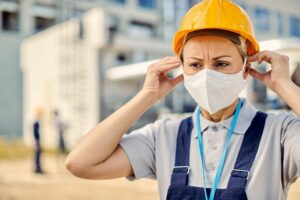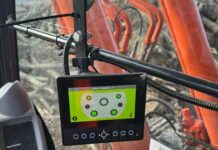Employees make significant contributions to the success of any business. Employers must ensure the safety and well-being of their employees to keep the business thriving.
Human beings have sensitive hearing, which can easily get damaged. In a high-noise manufacturing setting, loud noises threaten the safety of workers. It can affect their hearing and create a dangerous work environment.
To ensure employee safety, employers are responsible for protecting their workers from noise hazards. Read on to learn how to safeguard employees from noise hazards.
Noise hazards can damage a person’s hearing permanently. Workers in the manufacturing sector are more at-risk of encountering hazardous noise and have a higher chance of suffering from hearing damage in the future.

There are warning signs that can help employers identify noise hazards in their business. One sign is employees that are experiencing humming or ringing in their ears when they leave work. It may indicate temporary hearing damage.
Another sign is that workers have problems hearing each other when they are not far apart. If workers experience periods of temporary hearing loss, it is a sign of a high-noise environment.
Other than hearing damage, employees in a high-noise manufacturing environment may experience reduced productivity and problems with concentration and communication
Safety Hazards
Loud noises in the workplace can impede workers’ ability to communicate. Communication difficulty makes it tough for employees to hear warnings, resulting in a dangerous work environment.
A high-noise environment also interferes with employees’ awareness of their environment. In a manufacturing setting with a lot of heavy equipment, a lack of awareness is a safety risk. It increases the risk of injury and even fatalities.
There are some measures that manufacturers can implement to protect employees who work in a high-noise environment. Some of these measures are:
When high noise levels are simulated and experienced in real-life working environments, blood pressure, heart rate and cardiac output may increase. Maintaining the well-being of employees involves more than using the best Omron blood pressure monitors. Some workers spend most of their work hours in a noisy environment. Others are more susceptible to suffering from hearing loss. Employers must provide health surveillance to workers in both groups.
Health surveillance involves frequent ear checks for employees by a well-trained health professional. Hearing checks will inform an employer if a worker is fit to keep working in a noisy setting.
Employers should place a limit on how much time someone can spend around loud noise. They can also provide workers with soundproof rooms for noise breaks. Such an initiative will help employees recover from exposure to loud noise.
Equipment Maintenance
Manufacturers must ensure proper lubrication of machinery that has metal-on-metal contact. Doing so can lower the noise levels and reduce the chances of a breakdown. Additionally, equipment maintenance is a cost-effective way to limit manufacturing noise.
A manufacturing business may use large automated machines for production. If such a machine is the source of the hazardous noise, the manufacturer can move it away from employees. If the machinery can’t move, the manufacturer can build an enclosure around it to limit the noise.
Sometimes, a machine may not be fully automated and require human involvement. The employees dealing with the machine must have personal protective equipment (PPE). These workers will also need to work shorter shifts around the machine.
Reducing a worker’s exposure to high-noise environments may not be enough on its own. It may also not be feasible to reduce the noise. The best solution is to equip employees with protective hearing devices, such as earplugs and earmuffs.
Employers should combine protective hearing devices with other methods of enhancing employee safety. That’s because the devices may not be as effective when used on their own.
A decibel (dB) is a unit of measurement for sound. The louder the sound, the higher the number of decibels.
People continuously exposed to noise at 85 decibels or above must use ear protection devices. To understand how high 85 decibels is, soft music and a whisper measure 30 decibels. A vacuum cleaner produces an average of 75 decibels.
Noises that measure 130 decibels and above can induce pain if someone gets exposed to them for more than half a minute. In most industries, workers use hearing protection equipment to keep their ears safe.
Personal protective equipment like earmuffs has a noise reduction rating (NRR). The rating tells the wearer the amount of protection the device provides.
Noise reduction ratings are not necessarily accurate. So, experts advise people to de-rate the NRR included on hearing protection devices. Organizations differ on how much one should de-rate their hearing device.
Determining the correct NRR for an ear protection device helps select the right equipment — the higher the noise reduction rating on a device, the more protection it offers from loud sounds.
Take the noise produced by industrial processes, for example. Many such processes produce 95 decibels or less in terms of noise, but experts recommend an exposure limit of 85 decibels. So, an employee would need a hearing protection device with a 10 NRR for safety.
When selecting a hearing protection device, people should consider how it fits. The device should fit properly to guarantee safety.
Wrap Up
Occupational safety should always come before anything else. Addressing the noise produced in a manufacturing setting is as important as using the blood pressure monitors and noise reduction equipment. Both of these precautions ensure the safety and well-being of employees who are frequently exposed to loud noise.
*Medshop is one of the leading B2B medical equipment suppliers in the world; it doesn’t just sell medical equipment, though. It is also a leading source of occupational safety and health insights.

















